Let’s call this the Money Paradox. You want just the right amount of money for each stage of your company.
Too Little Money
Just two months ago, we were in the longest bull market in history. Many entrepreneurs were too young to remember the Great Recession and even fewer were even alive during the great Dot-com crash of 2001. When markets turn south, so does venture capital. The absolute worst time to raise money is when you need it and the market doesn’t want to give it to you.
Back in early 2001, our CFO Jeff Epstein wanted to raise some $400mm from the public markets for DoubleClick. I said, “but why Jeff, we have plenty of cash”. Jeff replied, “because when people want to give you money, you take it.” I was convinced and it turned out to be one of the last public offerings in a very, very long time. Over the next few months, over 70% of our dot-com customers went out of business because they didn’t have enough money to survive the downturn. Our business was greatly affected but we had enough cash to survive the downturn.
Founders stress out about dilution. Get over it, you will be diluted for the rest of your life. The question you should ask yourself is will an investment increase the price of your stock greater than your dilution. For example, if an investment dilutes you 20%, do you think that you can invest that money to increase your share price 20%+? If the answer is yes, take the investment. If the answer is no, you don’t have a business and should probably still take the money because your stock isn’t worth as much as you think.
Remember:
Bears and bulls make money, pigs get slaughtered.
Downturns always come.
Too Much Money
On the flip side are those hot startups that raise an enormous amount of money too early. A startup is simply a hypothesis of how you are going to solve a perceived problem. You have a lot of issues to work out before you’re ready to scale. Issues like the product, market fit, go-to-market strategy, key personnel, etc. You don’t want to rapidly scale before you have solved fundamental issues and know that you have a Scalable Opportunity (or, as we call it - ScOp). When you raise massive amounts of money, you scale too early resulting in replicating your mistakes all over the world.
In addition, people confuse raising massive amounts of money at super-high valuations with “success”. They think they’ve “made it”. People get stupid and move into expensive offices. They fly first class. They offer Google and Facebook-like benefits. They focus on spending money on things that aren’t critical for ultimate business success.
What you’ve really done is build a massive amount of preferred equity ahead of your common stock. Next comes the down rounds that sap the excitement out of you and your team.
Just Enough Money
Startups usually go through a few stages and you want to raise enough money to get you through to the next stage. To be clear, most companies fail along the way because they just don’t have a good product which isn’t a money issue. Ideally, you want to spend as little money as possible figuring that one out.
Product Development
You have an idea and you need to build an MVP so customers can actually buy it. This stage typically doesn’t take as much money as people believe. Unless you’re a proven entrepreneur, it’s unlikely you are going to find venture money to fund this stage. No, it’s typically your free labor and your/family/friend’s money.
Market Validation
Market validation is where you demonstrate that customers need your product and will actually pay you money (proof that you are creating value). The first 10 customers are really, really hard to land but once you do the next 100 are inevitable. This stage will typically take about $500k-1mm. If you’re a SaaS company, you want to find your way to $500k-1mm in ARR.
Pre-growth
You have a product that people want but haven’t solved every major issue. Perhaps your product meets the basic customer need but still has a ways to go. You are still missing key executive positions. You are still testing ways to scale customer acquisition. This stage may require from $1-5mm and is typically done by an early-stage VC. If you’re a SaaS company, you should have $500k-1mm in ARR and look to scale this 10x to $5mm-10mm in ARR over the next 2-3 years.
Growth
At this stage, you should have an executive team that can scale 10x. You should have all the processes in place to scale functions like sales, customer support, product management, and engineering. You should have a finance team that can accurately forecast revenue and expenses.

